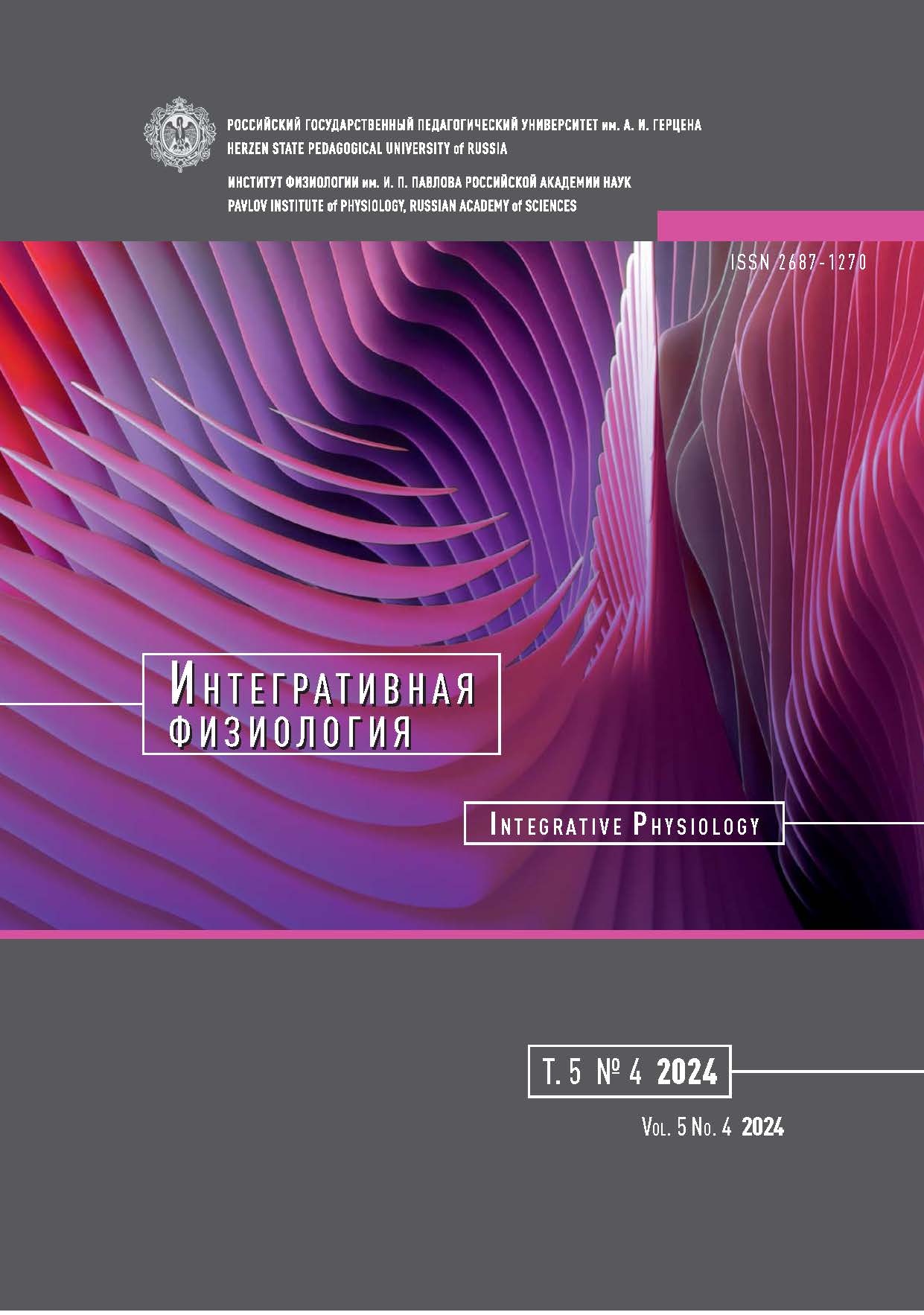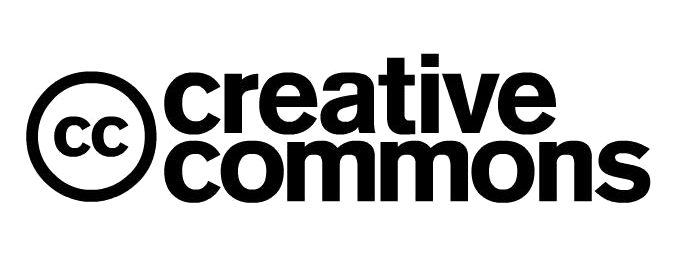Pharmacological activator of Piezo1 mechanosensitive channels induces increased stiffness of sensory neurons
DOI:
https://doi.org/10.33910/2687-1270-2024-5-4-336-344Keywords:
sensory neurons, atomic force microscopy, Piezo1 channels, Jedi2, organotypic tissue cultureAbstract
Mechanosensitive ion channels of the Piezo family, discovered in 2010, are crucial participants of intracellular mechanotransduction. The Piezo1 and Piezo2 channels are found in various cell types, including primary sensory neurons, although their precise roles remain poorly understood. Although Jedi2, a pharmacological activator of Piezo1 channels, has been shown to modulate Piezo1 activity, its effects on neurons have not been studied yet. In this work, we investigate the impact of Jedi2 on primary sensory neurons. Using organotypic tissue culture, we demonstrate that Jedi2 regulates neurite growth of sensory neurons of dorsal root ganglia in a dose-dependent manner. Atomic force microscopy revealed that a 10 μM concentration of Jedi2 — while having no effect on neurite growth — induces a significant increase in the stiffness of primary sensory neurons. This response can be explained by the triggering of intracellular Ca2+-dependent signaling pathways mediated by Piezo1 channel activation. Our findings suggest that Jedi2 at 10 μM concentration can serve as a useful tool for exploring the molecular mechanisms of Piezo1- mediated mechanotransduction in primary sensory neurons under physiologically relevant conditions.
References
Benech, J. C., Benech, N., Zambrana, A. I. et al. (2014) Diabetes increases stiffness of live cardiomyocytes measured by atomic force microscopy nanoindentation. American Journal of Physiology — Cell Physiology, vol. 307, no. 10, pp. C910–C919. https://doi.org/10.1152/ajpcell.00192.2013 (In English)
Binnig, G., Quate, C. F., Gerber, C. (1986) Atomic force microscope. Physical Review Letters, vol. 56, no. 9, pp. 930– 933. https://doi.org/10.1103/PhysRevLett.56.930 (In English)
Canales Coutiño, B., Mayor, R. (2021) Mechanosensitive ion channels in cell migration. Cells & Development, vol. 166, article 203683. https://doi.org/10.1016/j.cdev.2021.203683 (In English)
Cho, Y. S., Han, H. M., Jeong, S. Y. et al. (2022) Expression of Piezo1 in the trigeminal neurons and in the axons that innervate the dental pulp. Frontiers in Cellular Neuroscience, vol. 16, article 945948. https://doi.org/10.3389/fncel.2022.945948 (In English)
Chubinskiy-Nadezhdin, V. I., Vasileva, V. Y., Vassilieva, I. O. et al. (2019) Agonist-induced Piezo1 activation suppresses migration of transformed fibroblasts. Biochemical and Biophysical Research Communications, vol. 514, no. 1, pp. 173–179. https://doi.org/10.1016/j.bbrc.2019.04.139 (In English)
Coste, B., Delmas, P. (2024) PIEZO ion channels in cardiovascular functions and diseases. Circulation Research, vol. 134, no. 5, pp. 572–591. https://doi.org/10.1161/CIRCRESAHA.123.322798 (In English)
Coste, B., Mathur, J., Schmidt, M. et al. (2010) Piezo1 and Piezo2 are essential components of distinct mechanically activated cation channels. Science, vol. 330, no. 6000, pp. 55–60. https://doi.org/10.1126/science.1193270 (In English)
Cox, C. D., Bae, C., Ziegler, L. et al. (2016) Removal of the mechanoprotective influence of the cytoskeleton reveals PIEZO1 is gated by bilayer tension. Nature Communications, vol. 7, no. 1, article 10366. https://doi.org/10.1038/ncomms10366 (In English)
Cox, C. D., Gottlieb, P. A. (2019) Amphipathic molecules modulate PIEZO1 activity. Biochemical Society Transactions, vol. 47, no. 6, pp. 1833–1842. https://doi.org/10.1042/bst20190372 (In English)
Dienes, B., Bazsó, T., Szabó, L., Csernoch, L. (2023) The role of the Piezo1 mechanosensitive channel in the musculoskeletal system. International Journal of Molecular Sciences, vol. 24, no. 7, article 6513. https://doi.org/10.3390/ijms24076513 (In English)
Douguet, D., Patel, A., Xu, A. et al. (2019) Piezo ion channels in cardiovascular mechanobiology. Trends in Pharmacological Sciences, vol. 40, no. 12, pp. 956–970. https://doi.org/10.1016/j.tips.2019.10.002 (In English)
Fang, X.-Z., Zhou, T., Xu, J.-Q. et al. (2021) Structure, kinetic properties and biological function of mechanosensitive Piezo channels. Cell & Bioscience, vol. 11, no. 1, article 13. https://doi.org/10.1186/s13578-020-00522-z (In English)
Gnanasambandam, R., Gottlieb, P. A., Sachs, F. (2017) The kinetics and the permeation properties of Piezo channels. Current Topics in Membranes, vol. 79, pp. 275–307. https://doi.org/10.1016/bs.ctm.2016.11.004 (In English)
Haase, K., Pelling, A. E. (2015) Investigating cell mechanics with atomic force microscopy. Journal of the Royal Society Interface, vol. 12, no. 104, article 20140970. https://doi.org/10.1098/rsif.2014.0970 (In English)
Hutter, J. L., Bechhoefer, J. (1993) Calibration of atomic-force microscope tips. Review of Scientific Instruments, vol. 64, no. 7, pp. 1868–1873. https://doi.org/10.1063/1.1143970 (In English)
Jiang, F., Yin, K., Wu, K. et al. (2021) The mechanosensitive Piezo1 channel mediates heart mechano-chemo transduction. Nature Communications, vol. 12, no. 1, article 869. https://doi.org/10.1038/s41467-021-21178-4 (In English)
Kang, H., Hong, Z., Zhong, M. et al. (2019) Piezo1 mediates angiogenesis through activation of MT1-MMP signaling. American Journal of Physiology — Cell Physiology, vol. 316, no. 1, pp. C92–C103. https://doi.org/10.1152/ajpcell.00346.2018 (In English)
Khalisov, M. M., Ankudinov, A. V., Penniyaynen, V. A. et al. (2015) Application of atomic force microscopy for investigation of Na+,K+-ATPase signal-transducing function. Acta Physiologica Hungarica, vol. 102, no. 2, pp. 125–130. https://doi.org/10.1556/036.102.2015.2.2 (In English)
Khalisov, M. M., Berintseva, A. V., Podzorova, S. A. et al. (2024) Primenenie metoda atomno-silovoj mikroskopii dlya issledovaniya otvetov mekhanochuvstvitel’nykh kanalov Piezo1 fibroblastov serdtsa [Atomic force microscopy as a method to study the responses of mechanosensitive Piezo1 channels of cardiac fibroblasts]. Integrativnaya fiziologiya — Integrative Physiology, vol. 5, no. 1, pp. 51–59. https://doi.org/10.33910/2687-1270-2024-5-1-50-59 (In Russian)
Khalisov, M. M., Penniyaynen, V. A., Podzorova, S. A. et al. (2020) Kolkhitsin izmenyaet strukturu tsitoskeleta fibroblastov: kolichestvennoe issledovanie adaptivnoj kletochnoj reaktsii metodami atomno-silovoj i konfokal’noj lazernoj skaniruyushchej mikroskopii [The effect of colchicine on the structure of the fibroblast cytoskeleton: A quantitative study of an adaptive cell response by means of atomic force and confocal laser scanning microscopy methods]. Integrativnaya fiziologiya — Integrative Physiology, vol. 1, no. 2, pp. 115–122. https://doi.org/10.33910/2687-1270-2020-1-2-115-122 (In Russian)
Lai, A., Chen, Y. C., Cox, C. D. et al. (2021) Analyzing the shear-induced sensitization of mechanosensitive ion channel Piezo-1 in human aortic endothelial cells. Journal of Cellular Physiology, vol. 236, no. 4, pp. 2976–2987. https://doi.org/10.1002/jcp.30056 (In English)
Li, X., Hu, J., Zhao, X. et al. (2022) Piezo channels in the urinary system. Experimental & Molecular Medicine, vol. 54, no. 6, pp. 697–710. https://doi.org/10.1038/s12276-022-00777-1 (In English)
Liang, X., Liu, S., Wang, X. et al. (2021) Alteration of nanomechanical properties of pancreatic cancer cells through anticancer drug treatment revealed by atomic force microscopy. Beilstein Journal of Nanotechnology, vol. 12, no. 1, pp. 1372–1379. https://doi.org/10.3762/bjnano.12.101 (In English)
Lieber, S. C., Aubry, N., Pain, J. et al. (2004) Aging increases stiffness of cardiac myocytes measured by atomic force microscopy nanoindentation. American Journal of Physiology — Heart and Circulatory Physiology, vol. 287, no. 2, pp. H645–H651. https://doi.org/10.1152/ajpheart.00564.2003 (In English)
Lin, L. J., Ge, Y. M., Tian, Y. et al. (2020) Multi-scale mechanical investigation of articular cartilage suffered progressive pseudorheumatoid dysplasia. Clinical Biomechanics, vol. 79, article 104947. https://doi.org/10.1016/j.clinbiomech.2019.12.029 (In English)
Martinac, B., Cox, C. D. (2017) Mechanosensory transduction: Focus on ion channels. In: B. D. Roitberg (ed.). Reference module in life sciences. Amsterdam: Elsevier Publ., pp. 1–47. https://doi.org/10.1016/b978-0-12-809633-8.08094-8 (In English)
Mikhailov, N., Leskinen, J., Fagerlund, I. et al. (2019) Mechanosensitive meningeal nociception via Piezo channels: Implications for pulsatile pain in migraine? Neuropharmacology, vol. 149, pp. 113–123. https://doi.org/10.1016/j.neuropharm.2019.02.015 (In English)
Miles, L., Powell, J., Kozak, C., Song, Y. (2023) Mechanosensitive ion channels, axonal growth, and regeneration. The Neuroscientist, vol. 29, no. 4, pp. 421–444. https://doi.org/10.1177/10738584221088575 (In English)
Penniyaynen, V. A., Plakhova, V. B., Rogachevskii, I. V. et al. (2019) Molecular mechanisms and signaling by comenic acid in nociceptive neurons influence the pathophysiology of neuropathic pain. Pathophysiology, vol. 26, no. 3–4, pp. 245–352. https://doi.org/10.1016/j.pathophys.2019.06.003 (In English)
Pérez-Domínguez, S., Kulkarni, S. G., Rianna, C., Radmacher, M. (2020) Atomic force microscopy for cell mechanics and diseases. Neuroforum, vol. 26, no. 2, pp. 101–109. https://doi.org/10.1515/nf-2020-0001 (In English)
Plakhova, V. B., Penniyaynen, V. A., Rogachevskii, I. V. et al. (2020) Dual mechanism of modulation of NaV1.8 sodium channels by ouabain. Canadian Journal of Physiology and Pharmacology, vol. 98, no. 11, pp. 785–802. https://doi.org/10.1139/cjpp-2020-0197 (In English)
Ranade, S. S., Woo, S.-H., Dubin, A. E. et al. (2014) Piezo2 is the major transducer of mechanical forces for touch sensation in mice. Nature, vol. 516, no. 7529, pp. 121–125. https://doi.org/10.1038/nature13980 (In English)
Ridone, P., Vassalli, M., Martinac, B. (2019) Piezo1 mechanosensitive channels: What are they and why are they important. Biophysical Reviews, vol. 11, no. 5, pp. 795–805. https://doi.org/10.1007/s12551-019-00584-5 (In English)
Roh, J., Hwang, S.-M., Lee, S.-H. et al. (2020) Functional expression of Piezo1 in dorsal root ganglion (DRG) neurons. International Journal of Molecular Sciences, vol. 21, no. 11, article 3834. https://doi.org/10.3390/ijms21113834 (In English)
Shin, S. M., Itson-Zoske, B., Fan, F. et al. (2023) Peripheral sensory neurons and non-neuronal cells express functional Piezo1 channels. Molecular Pain, vol. 19, article 17448069231174315. https://doi.org/10.1177/17448069231174315 (In English)
Sneddon, I. N. (1965) The relation between load and penetration in the axisymmetric boussinesq problem for a punch of arbitrary profile. International Journal of Engineering Science, vol. 3, no. 1, pp. 47–57. https://doi.org/10.1016/0020-7225(65)90019-4 (In English)
Stylianou, A., Lekka, M., Stylianopoulos, T. (2018) AFM assessing of nanomechanical fingerprints for cancer early diagnosis and classification: From single cell to tissue level. Nanoscale, vol. 10, no. 45, pp. 20930–20945. https://doi.org/10.1039/c8nr06146g (In English)
Syeda, R., Xu, J., Dubin, A. E. et al. (2015) Chemical activation of the mechanotransduction channel Piezo1. eLife, vol. 4, article e07369. https://doi.org/10.7554/eLife.07369 (In English)
Szczot, M., Nickolls, A. R., Lam, R. M. et al. (2021) The form and function of Piezo2. Annual Review of Biochemistry, vol. 90, no. 1, pp. 507–534. https://doi.org/10.1146/annurev-biochem-081720-023244 (In English)
Tee, S.-Y., Fu, J., Chen, C. S. et al. (2011) Cell shape and substrate rigidity both regulate cell stiffness. Biophysical Journal, vol. 100, no. 5, pp. L25–L27. https://doi.org/10.1016/j.bpj.2010.12.3744 (In English)
Vasileva, V., Morachevskaya, E., Sudarikova, A. et al. (2021) Selective chemical activation of Piezo1 in leukemia cell membrane: Single channel analysis. International Journal of Molecular Sciences, vol. 22, no. 15, article 7839. https://doi.org/10.3390/ijms22157839 (In English)
Volkers, L., Mechioukhi, Y., Coste, B. (2015) Piezo channels: From structure to function. Pflügers Archiv — European Journal of Physiology, vol. 467, no. 1, pp. 95–99. https://doi.org/10.1007/s00424-014-1578-z (In English)
Wang, H., Yuan, Z., Wang, B. et al. (2022) COMP (Cartilage Oligomeric Matrix Protein), a novel PIEZO1 regulator that controls blood pressure. Hypertension, vol. 79, no. 3, pp. 549–561. https://doi.org/10.1161/HYPERTENSIONAHA.121.17972 (In English)
Wang, J., La, J.-H., Hamill, O. P. (2019) Piezo1 is selectively expressed in small diameter mouse DRG neurons distinct from neurons strongly expressing TRPV1. Frontiers in Molecular Neuroscience, vol. 12, article 178. https://doi.org/10.3389/fnmol.2019.00178 (In English)
Wang, Y., Chi, S., Guo, H. et al. (2018) A lever-like transduction pathway for long-distance chemical- and mechano-gating of the mechanosensitive Piezo1 channel. Nature Communications, vol. 9, no. 1, article 1300. https://doi.org/10.1038/s41467-018-03570-9 (In English)
Xu, X., Liu, S., Liu, H. et al. (2021) Piezo channels: Awesome mechanosensitive structures in cellular mechanotransduction and their role in bone. International Journal of Molecular Sciences, vol. 22, no. 12, article 6429. https://doi.org/10.3390/ijms22126429 (In English)
Zhang, M., Wang, Y., Geng, J. et al. (2019) Mechanically activated Piezo channels mediate touch and suppress acute mechanical pain response in mice. Cell Reports, vol. 26, no. 6, pp. 1419–1431. https://doi.org/10.1016/j.celrep.2019.01.056 (In English)
Downloads
Published
Issue
Section
License
Copyright (c) 2025 Valentina A. Penniyaynen, Maksim M. Khalisov, Anna V. Berintseva, Svetlana A. Podzorova, Boris V. Krylov

This work is licensed under a Creative Commons Attribution-NonCommercial 4.0 International License.
The work is provided under the terms of the Public Offer and of Creative Commons public license Creative Commons Attribution 4.0 International (CC BY 4.0).
This license permits an unlimited number of users to copy and redistribute the material in any medium or format, and to remix, transform, and build upon the material for any purpose, including commercial use.
This license retains copyright for the authors but allows others to freely distribute, use, and adapt the work, on the mandatory condition that appropriate credit is given. Users must provide a correct link to the original publication in our journal, cite the authors' names, and indicate if any changes were made.
Copyright remains with the authors. The CC BY 4.0 license does not transfer rights to third parties but rather grants users prior permission for use, provided the attribution condition is met. Any use of the work will be governed by the terms of this license.







